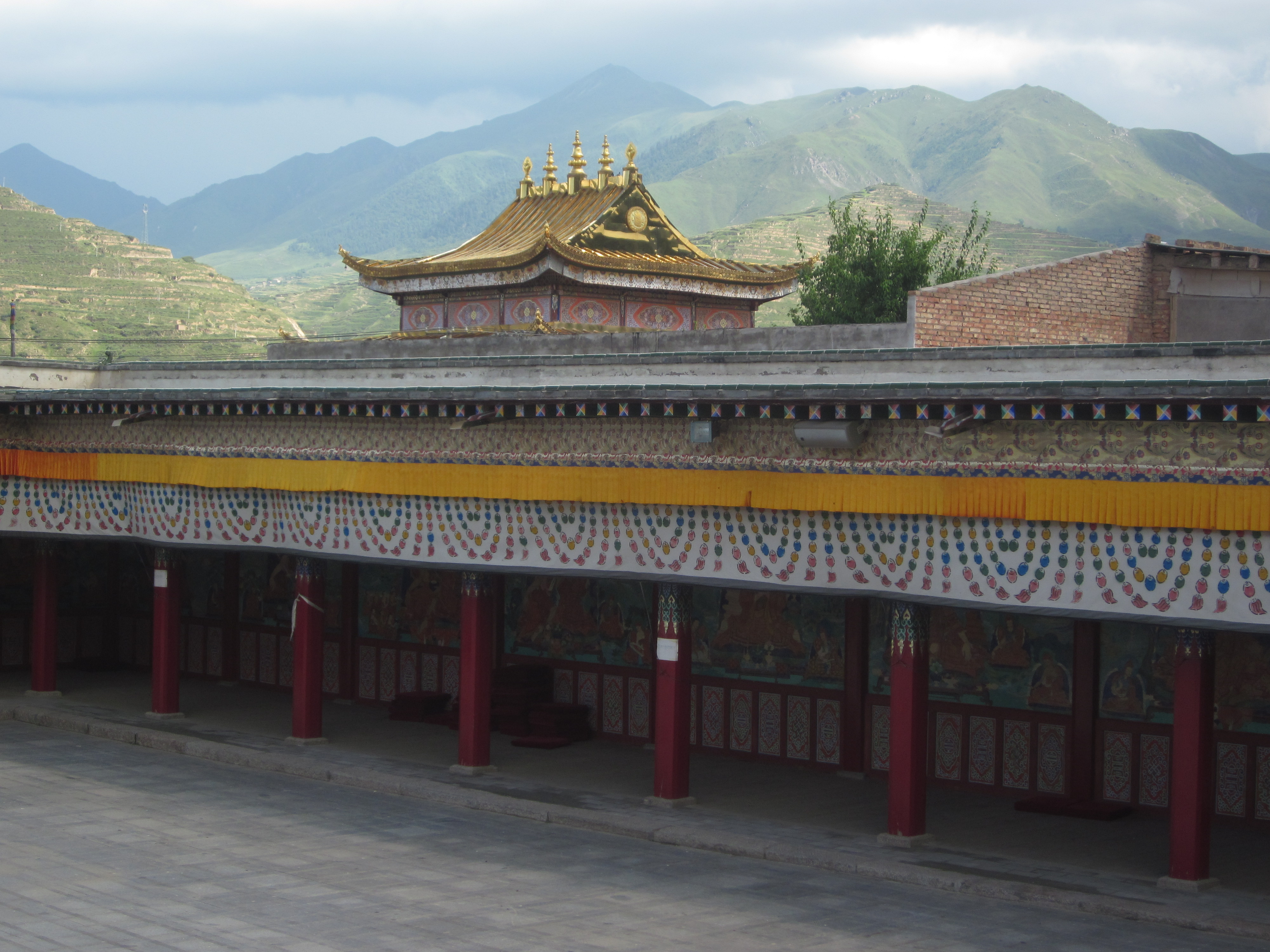Rongwo Monastery on:
[Wikipedia]
[Google]
[Amazon]
 Rongwo Monastery (, formally , ), is a Tibetan Buddhist monastery in
Rongwo Monastery (, formally , ), is a Tibetan Buddhist monastery in
 Rongwo Monastery was initially established as a three monastery site in 1341 in by Rongwo Samten
Rongwo Monastery was initially established as a three monastery site in 1341 in by Rongwo Samten
 Rongwo Monastery (, formally , ), is a Tibetan Buddhist monastery in
Rongwo Monastery (, formally , ), is a Tibetan Buddhist monastery in Tongren County
Tongren (; ), known to Tibetans as Rebgong () in the historic region of Amdo, is the capital and second smallest administrative subdivision by area within Huangnan Tibetan Autonomous Prefecture in Qinghai, China. The city has an area of 3465 squar ...
, Huangnan Tibetan Autonomous Prefecture
Huangnan Tibetan Autonomous Prefecture (; ) is an autonomous prefecture of Eastern Qinghai, China, bordering Gansu to the east. The prefecture has area of and its seat is in Tongren County.
Demographics
According to the 2000 census, Huangnan ...
, Qinghai
Qinghai (; alternately romanized as Tsinghai, Ch'inghai), also known as Kokonor, is a landlocked province in the northwest of the People's Republic of China. It is the fourth largest province of China by area and has the third smallest po ...
, China. It is from Xining
Xining (; ), alternatively known as Sining, is the capital of Qinghai province in western China and the largest city on the Tibetan Plateau.
The city was a commercial hub along the Northern Silk Road's Hexi Corridor for over 2000 years, and wa ...
.
Name
The monastery is named after the Rongwo River upon which it is located.History
 Rongwo Monastery was initially established as a three monastery site in 1341 in by Rongwo Samten
Rongwo Monastery was initially established as a three monastery site in 1341 in by Rongwo Samten Rinpoche
Rinpoche, also spelled Rimboche and Rinboku (), is an honorific term used in the Tibetan language. It literally means "precious one", and may refer to a person, place, or thing—like the words "gem" or "jewel" (Sanskrit: ''Ratna'').
The word con ...
. Samten’s younger brother was the architect and designer of the monasteries. The first monastery built was the Temple of 3 Buddhas and then the Golden Temple and other temples. Shartsang Kaldan Gyatso (1607-1677) is recognized as the 1st re-incarnation of Rongwo Samten Rinpoche and was the founder of the current monastery on the temples' sites. The 8th re-incarnation of Shartsang Rinpoche was recognized and installed in October 1991. Yarba Chogyi built the prayer hall, the Victory Stupa and the stupas at the 4 corners of the monastery, had the sayings of Buddha written in gold, and commissioned the statues of Je Tsongkhapa. Shartsang Kaldan Gyatso established the first monastic college, Tsennyi Tratsang, in which Buddhist dialectics, vinaya
The Vinaya (Pali & Sanskrit: विनय) is the division of the Buddhist canon ('' Tripitaka'') containing the rules and procedures that govern the Buddhist Sangha (community of like-minded ''sramanas''). Three parallel Vinaya traditions remai ...
, Madhyamika
Mādhyamaka ("middle way" or "centrism"; ; Tibetan: དབུ་མ་པ ; ''dbu ma pa''), otherwise known as Śūnyavāda ("the emptiness doctrine") and Niḥsvabhāvavāda ("the no ''svabhāva'' doctrine"), refers to a tradition of Buddhist ...
philosophy, Prajnaparamita
A Tibetan painting with a Prajñāpāramitā sūtra at the center of the mandala
Prajñāpāramitā ( sa, प्रज्ञापारमिता) means "the Perfection of Wisdom" or "Transcendental Knowledge" in Mahāyāna and Theravāda B ...
, and Abhidharma
The Abhidharma are ancient (third century BCE and later) Buddhist texts which contain detailed scholastic presentations of doctrinal material appearing in the Buddhist ''sutras''. It also refers to the scholastic method itself as well as the f ...
are still currently taught, in 1630. Following multiple subsequent re-incarnations, the 7th incarnation of Shartsang Rinpoche, Lobsang Trinley Longtok Gyatso, increased the number of colleges to the present: the Tsennyi Tratsang, the Gyamat Tratsang (tantric College, where tantric scriptures and practices are taught) and the Duikor Tratsang, a monastic college of the wheel of time that is also known as the College of Kalachakra
''Kālacakra'' () is a polysemic term in Vajrayana Buddhism that means "wheel of time" or "time cycles". "''Kālacakra''" is also the name of a series of Buddhist texts and a major practice lineage in Indian Buddhism and Tibetan Buddhism. The ta ...
, the 10 syllable mantra. This information was provided at the monastery in June 2006 and is translated from their official documents.
Footnotes
{{Authority control Tibetan Buddhist temples in Qinghai Gelug monasteries Amdo Major National Historical and Cultural Sites in Qinghai Buddhist temples in Huangnan Tibetan Autonomous Prefecture Buddhist monasteries in Qinghai